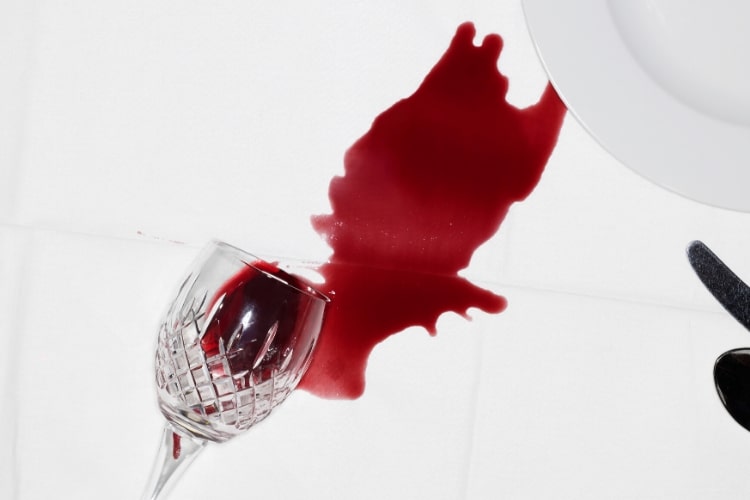Holiday Stain Guide
Thanksgiving is a time for family togetherness and delicious food. Sadly, the day after Thanksgiving can be a time for fighting set-in stains. But it doesn’t have to be that way.
Don’t worry about all those aunts and uncles trudging through your home with food and beverages. These tips can help you banish those spots and splotches for good.
Tricks for Treating
As soon as someone spills something, spring into action like a stain-removing superhero! It’s much easier to eliminate stains before they set.
First of all, do you dab or rub? The answer is (drum roll): dab. When you dab, you apply just enough force to extract the liquid. When you rub, you press too hard. The liquid gets pushed downward, and the stain is stubborner.
For the most part, when you dab, you don’t need soap.
Different Strokes for Different Stains
Of course, your stain removal process will vary according to the material. Here are some examples.
Grease
If grease gets on your upholstery or carpet, pour baby powderOpens a new window or cornstarch onto the affected area, and vacuum it off a few hours later.
How do you get grease out of clothes? Take off the stained article of clothing, and lay it flat. Use a cloth or powder puff to apply a powder like cornstarch, and brush it off a few minutes later. Add more powder if necessary. (If it’s silk, keep the powder on overnight.)
For certain fabrics — including cotton, canvas, polyester, nylon, and linen — it’s better to skip the powder. Instead, soak the stain with a pretreatment solutionOpens a new window and let it air-dry; then wash the clothing with hot water.
Wine
A white wine stain is simple to deal with. Dab it with a cloth that has a little dish soapOpens a new window on it, and use another wet cloth to dab it again.

For a red wine stain, start by dabbing with a wet cloth. Next, scatter a powderOpens a new window like salt or baking soda on it, and pat it again with a wet cloth about 20 minutes later.
Coffee
After blotting a coffee stain, spray on one of these substances: white vinegar or club sodaOpens a new window for clothing, or 3 percent household hydrogen peroxide for carpets.
Once you’ve soaked the stain and gently rubbed in the liquid, leave it be for 10 minutes. Rinse with cool water, and repeat the process until that coffee stain is history.
If you have a light coffee stain on an article of clothing, you can just wash it with the rest of your laundry and let it air dry.
For upholstery, combine cool water (about two cupsOpens a new window) with a tablespoon of dish soap. Dab it in with a cloth. Once the stain’s gone, pat cold water onto the spot, and pat dry.
Food Dyes
If food dye gets on clothing, swab it with cool water, and apply a prewash stain removerOpens a new window. After 15 minutes, toss it in the laundry.
With carpets and upholstery, blot the dyeOpens a new window with a paper towel, dribble a little cool water onto the stain, and blot some more. Then combine a cup of cool water with a tablespoon of oxygen bleach. Apply that liquid with a cloth; circling the stain’s perimeter, make your way to the middle. A half hour later, pat that mixture off completely.
The Fabrics of Our Lives
Here are a few extra notes about different materialsOpens a new window.
Wool
Keep your wool away from acid and hot water. What’s more, a mixtureOpens a new window of cool water, mild detergent and white vinegar can be effective on wool stains.
Cotton
Detergents and acidic liquids like lemon juice are often ideal for cotton stain removal, while you should avoid using a chlorine bleach unless nothing else works.
Silk
Obviously, silk is very delicate, but a glycerin stain remover can work well on it. On the other hand, never use a digestantOpens a new window on silk (or on wool, for that matter).
Polyester
Don’t use hydrogen peroxide — or any other “oxide” — on polyester. Otherwise, polyester is tough, and you can use mostly any detergent.
For extra protection, apply an efficient stain guardOpens a new window like 303 ProductsOpens a new window shortly before Turkey Day. It’ll make your carpeting and upholstery resist stain absorption.
So that’s Stain Removal 101. No longer will you spend the day after Thanksgiving fighting stains in vain. Instead, you can save your energy to fight your way through stores and malls.





